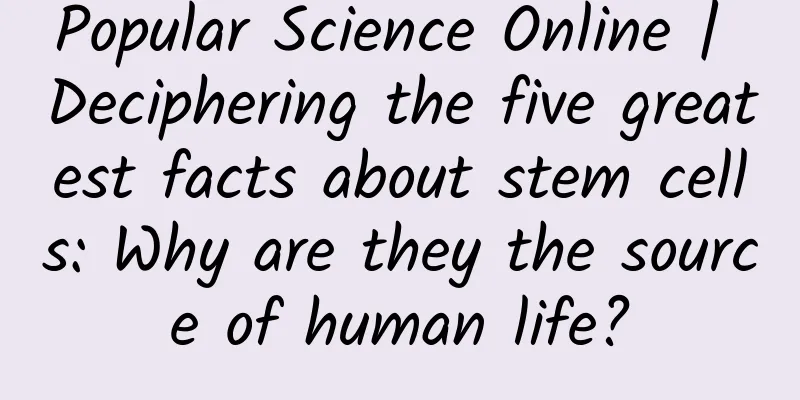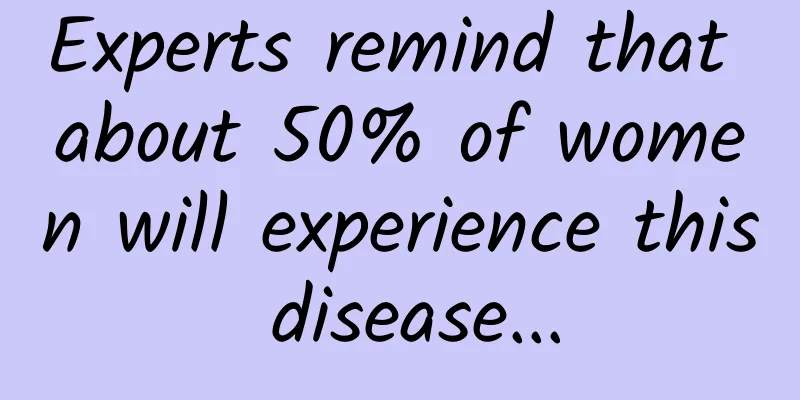Popular Science Online | Deciphering the five greatest facts about stem cells: Why are they the source of human life?

|
The wrinkles that quietly grow at the corners of the eyes, the collagen that gradually disappears from the cheeks, the skin that becomes increasingly loose and sagging...Aging is a natural law that is prevalent in the biological world and there is nothing we can do about it. “The Master stood by a river and said: ‘Time passes by like this, it never stops day or night.’” Throughout history, "immortality" has always been a dream that humans have been pursuing but have never been able to achieve. "The road is long and arduous, but I will continue to search for it." This ultimate desire has driven generations of scientists to explore the mysteries of life and aging. Nowadays, people have discovered that the "elixir of life" for humans may be hidden in our bodies, that is, stem cells. How magical are stem cells? Why has research on them become so popular in recent years? The "Top Five Stem Cells" will help you understand their charm. “Stem cells that are expected to be most widely used in the future” Mesenchymal stem cells are the most researched and fastest growing type of stem cell therapy at home and abroad in recent years. The reason is that this type of cell can differentiate into various tissue cells such as bone, cartilage, fat, nerve, muscle, etc., and is being used in the research of treating various diseases. At the same time, mesenchymal stem cells are considered to be good materials for repairing and regenerating damaged tissues or organs in the human body. Mesenchymal stem cells were first discovered in the bone marrow, and later were found to exist in the placenta (including the umbilical cord) tissue after the baby was born. The application research of mesenchymal stem cells was first used for bone and cartilage repair. Now the research on mesenchymal stem cell treatment has been expanded to stroke, cerebral palsy, acute myocardial infarction and chronic ischemic heart disease, liver disease, as well as dental, corneal, blood diseases and so on. “The earliest stem cell used in clinical practice” Hematopoietic stem cells are a type of adult stem cells and are found in the largest amount in the human bone marrow. In the past, hematopoietic stem cell transplantation mainly relied on extracting allogeneic hematopoietic stem cells from the donor's bone marrow, and matching was required before transplantation. With the scientific discovery of the existence of hematopoietic stem cells in umbilical cord blood, the preservation of autologous hematopoietic stem cells in umbilical cord blood at the time of the baby's birth has gradually become popular. “The largest variety of stem cells” Adult stem cells exist in mature body tissues and there are many types. So far, it remains a mystery how many types of adult stem cells there are. The more common adult stem cells include mesenchymal stem cells, hematopoietic stem cells, neural stem cells, muscle stem cells, fat stem cells, etc. Adult stem cells are like advanced maintenance technicians in the human body. Their function is to produce corresponding tissue cells when necessary to replace naturally apoptotic or damaged tissue cells. Studies have shown that adult stem cell therapy research accounts for more than 80% of global stem cell therapy research. "Nobel Prize-winning stem cells" Induced pluripotent stem cells, also known as induced reprogrammed stem cells, are obtained by introducing certain transcription factors into animal or human somatic cells through gene transfection technology, so that somatic cells are transformed into embryonic stem cells. The emergence of induced pluripotent stem cells has solved the problem of the source of embryonic stem cells to a certain extent. It is also because of this that two researchers from Japan and the United Kingdom simultaneously won the 2012 Nobel Prize in Medicine. The most "hotly discussed" stem cells Embryonic stem cells (ESCs, referred to as ES, EK or ESC cells.) Embryonic stem cells are a type of cell isolated from early embryos (before the gastrula stage) or primitive gonads. They have the characteristics of unlimited proliferation, self-renewal and multidirectional differentiation in vitro. Whether in vitro or in vivo, ES cells can be induced to differentiate into almost all cell types in the body. Embryonic stem cell research has always been a controversial field. Supporters believe that this research can help cure many difficult and complicated diseases because embryonic stem cells can differentiate into APSC pluripotent cells with multiple functions. It is considered a charitable act of saving lives and a manifestation of scientific progress. Opponents believe that embryonic stem cell research must destroy embryos, which are the life forms in the womb before a person is formed. Stem cells are essential for the body's self-repair and tissue regeneration, but the number and capacity of adult stem cells in our bodies are limited after all. Therefore, as we age, the number of stem cells in various tissues and organs of the human body decreases, the ability to proliferate and differentiate declines, and damaged tissues and organs are not repaired and regenerated in a timely manner, which directly leads to aging and disease. Humans often regard the age of 25 as a watershed. Before this age, the number of new cells generated in the human body every day is far greater than the number of aging and death cells, so the skin is smooth, delicate and energetic. After the age of 25, the rate of cell regeneration will be lower than the rate of apoptosis, and the gap will become larger and larger. So, scientists thought, wouldn’t it be possible if we could separate adult stem cells from the human body, allow them to proliferate under our control, and then send them back into the body to allow them to function? Of course, these are all currently under research, including stem cell self-renewal, stem cells improving the body's ability to resist free radicals, stem cells secreting superoxide dismutase, etc. Stem cell research will eventually realize people’s millennial dream! END |
>>: Why is Qinling Mountains called the “Central Water Tower”?
Recommend
Why add multiple creatives to a promotion unit?
Adding multiple creatives to a promotion unit can...
If "live suicide" happens in the circle of friends
Social relationships on WeChat are closer, so the...
How to improve your user operation system? Here are 4 ways
We can think of the user operation system as a bi...
"Wild Man Fans" suddenly became popular! What happened to this generation of young people?
It’s too late to mourn the City Walk that went vi...
NIO's market value has soared dozens of times, surpassing BYD to become the No. 1 in China and No. 4 in the world
Recently, the new Chinese car-making companies ha...
What features should a landing page that sells well during the 618 shopping festival have?
Tmall’s transaction volume on Double Eleven reach...
Content traffic generation: starting an e-commerce cooperation project from scratch
For most public accounts , content monetization i...
Do insects have emotions?
© BBC/Alamy Leviathan Press: Personally, the ques...
What to do with your old iPhone?
Every time Apple releases a new phone, Apple fans...
Is IP marketing a powerful tool for brands to break through?
The summer of 2017 may become a turning point in ...
Have you ever seen a "mini duck" that looks like a ball of cotton?
Dongting Lake is the best water in the world, and...
Real cats being "poisoned to death" in film and television dramas have sparked heated discussions. How can we avoid animal harm?
Recently, the cat in the TV series "The Mist...
Create short video IP in the first year of 5G and make your fans addicted to you
2019 is known as the first year of 5G. The arriva...









